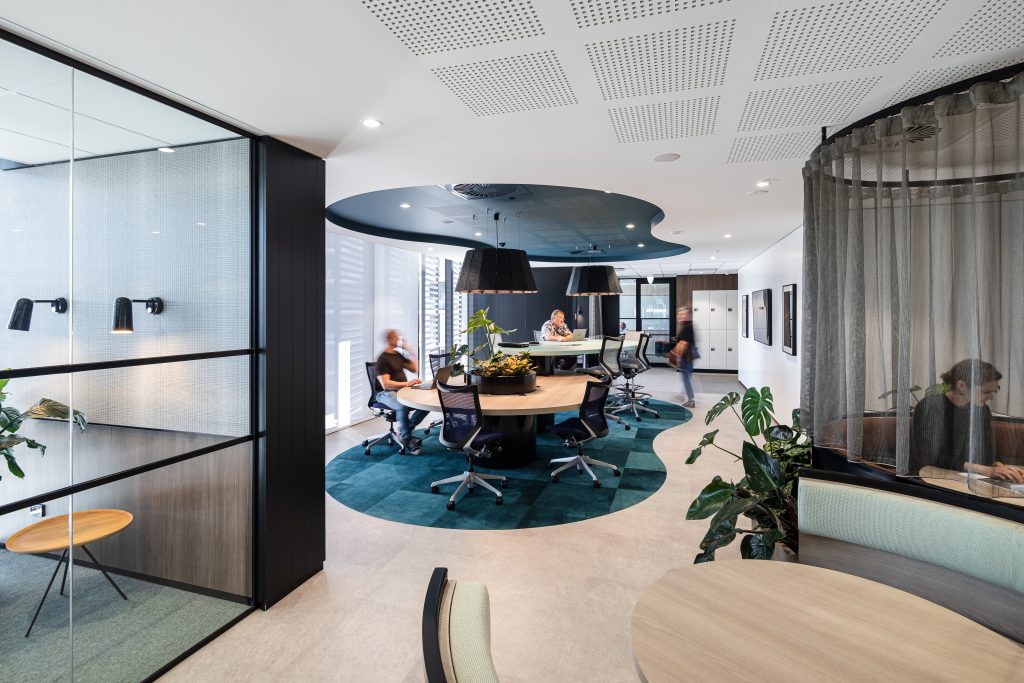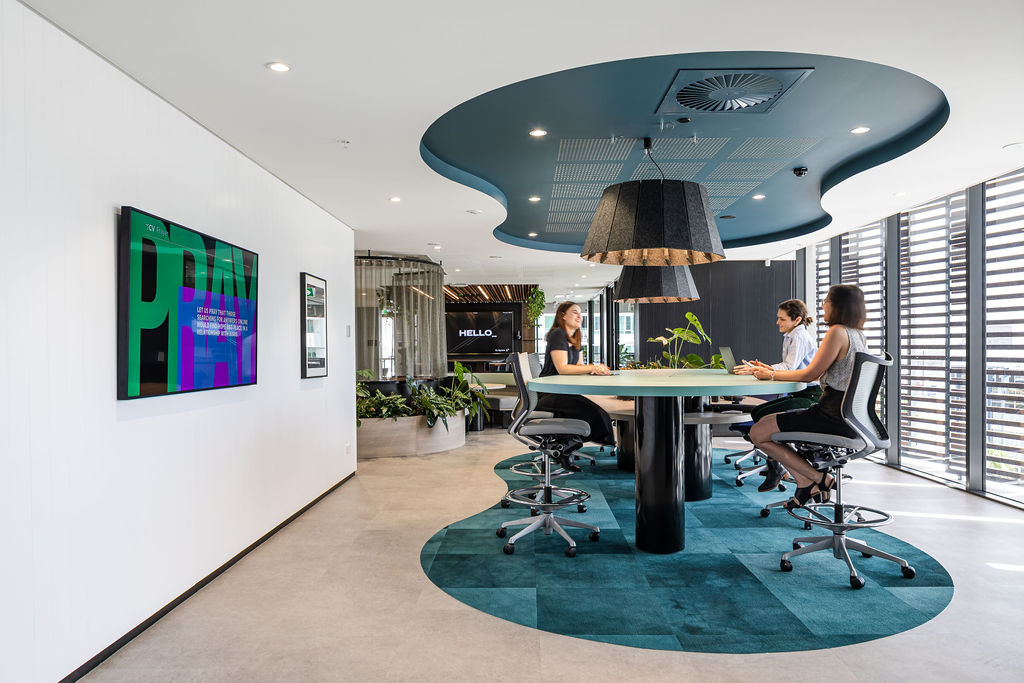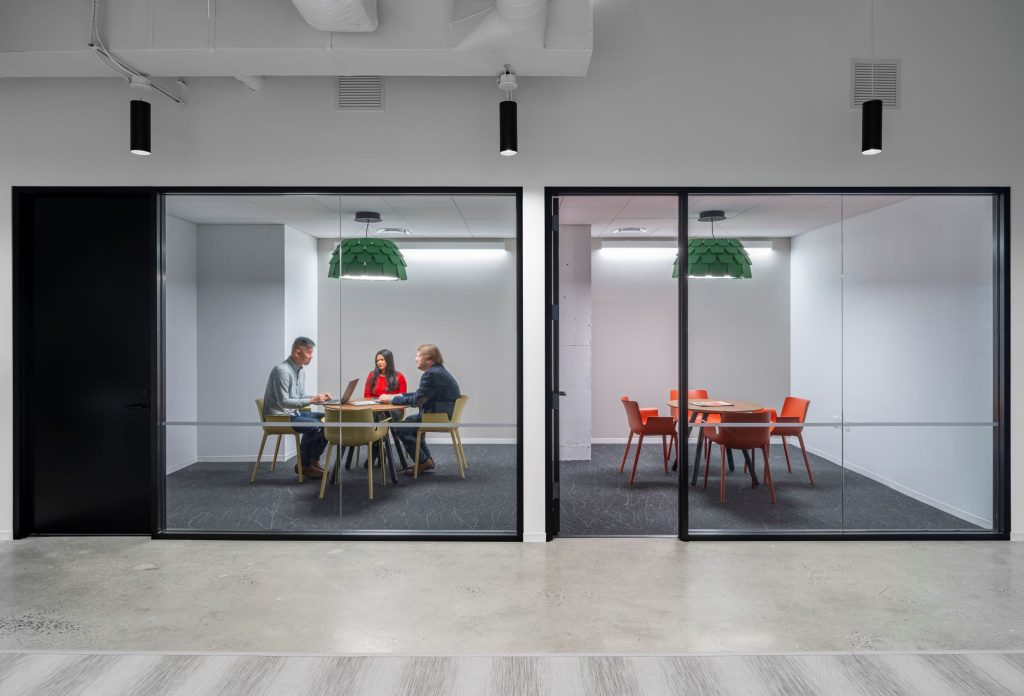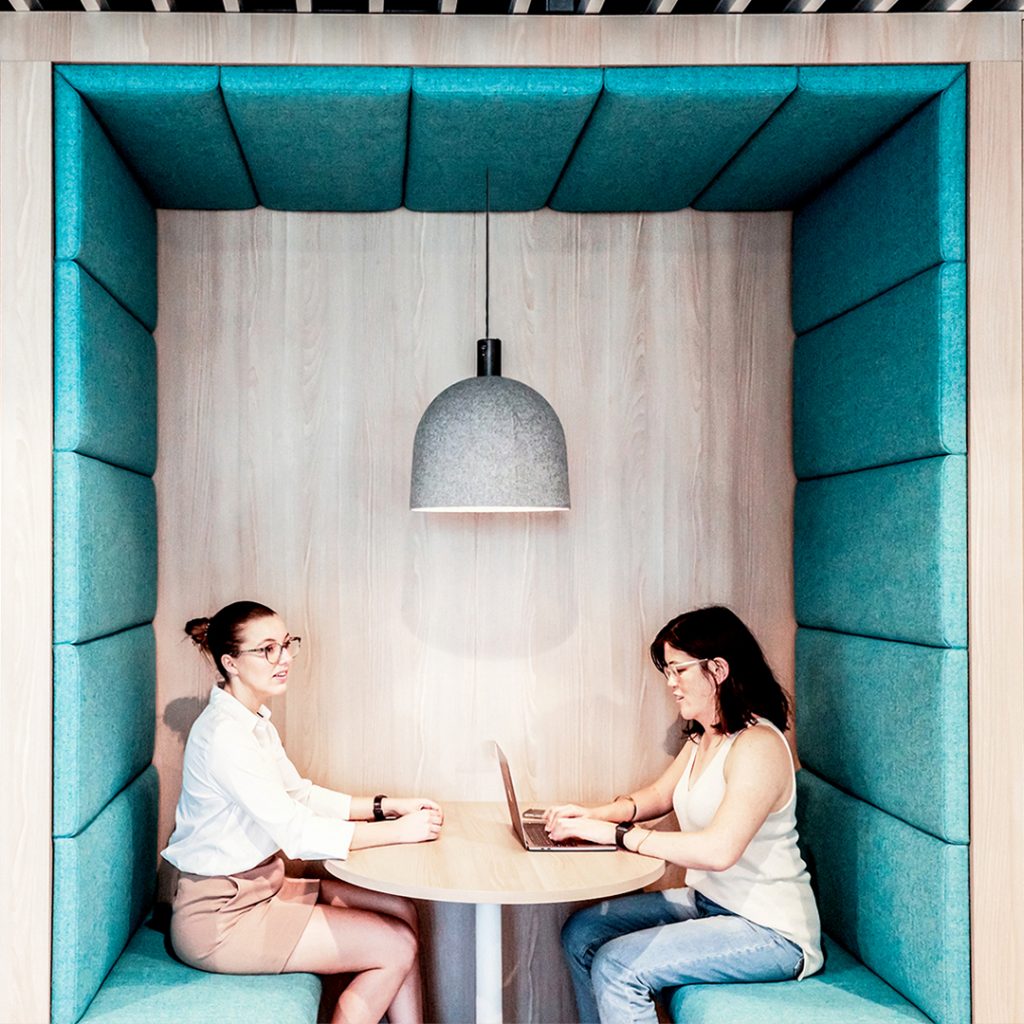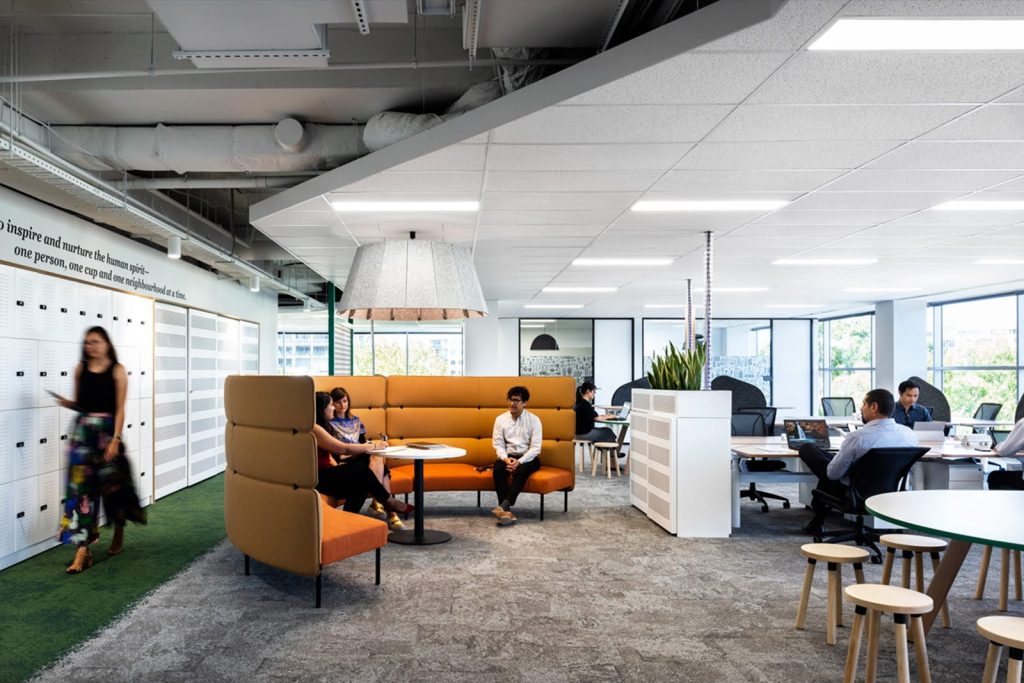Returning to the office is a priority for employees and employers alike. Working from home, or in any sort of isolation, is fine for the short term, but ultimately, our need for human connection pulls us back together. It is the relationships and collaboration with colleagues that drive creativity and design-thinking. There is a reason that brainstorming and whiteboard sessions were the ‘thing’ in the ’90s. Conversations, where ideas are thrown around, are often where the solutions are found.
As offices welcome employees back, businesses are reimagining their spaces to embrace communication, collaboration, connection, and creation. Optimizing the contact time with colleagues when co-located is equally as important as embracing the new ways of working that have emerged during the pandemic. Workspace considerations have changed, with an increased focus on sensory environment design, employee wellbeing, and fluid spaces. We know that collaboration areas and flexible working considerations are key, but it’s also vital for businesses to remain agile and mitigate risk.
For those businesses who have survived and are looking towards a post-pandemic era with the workforce, workspace usage has become a priority. Costs associated with large lease holdings and rental spaces have not disappeared – even if the work has. In the blink of an eye, an office space with fifty cubicles was an empty shell. So how can we re-imagine these spaces? How can we take the footprints of these offices and make them work efficiently? And how can we do it with minimal cost and disruption?
Undoubtedly, the greatest shift in working habits has been towards online meeting spaces. While the pandemic saw these initially beaming from people’s home offices, more and more work meetings continue to occur online, replacing what would have been face-to-face two years ago. The requirement for quiet, technology-capable, appropriate spaces for these meetings to occur has escalated. While many small offices may have operated with one or two conference/meeting rooms, this demand has now increased.
